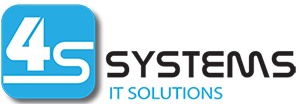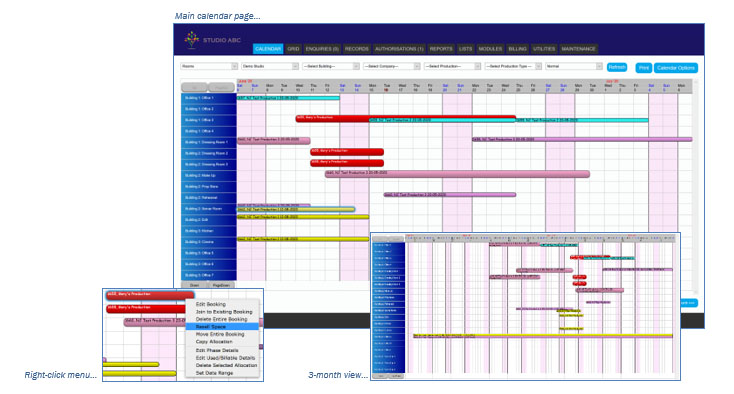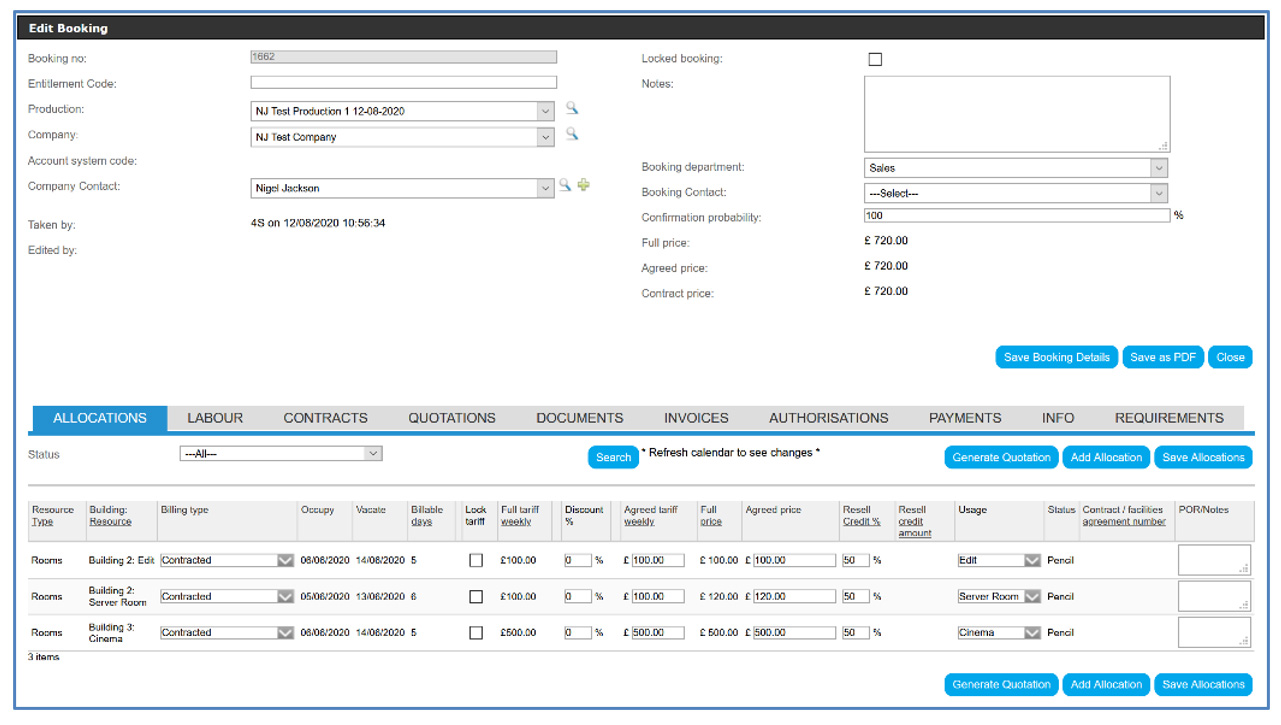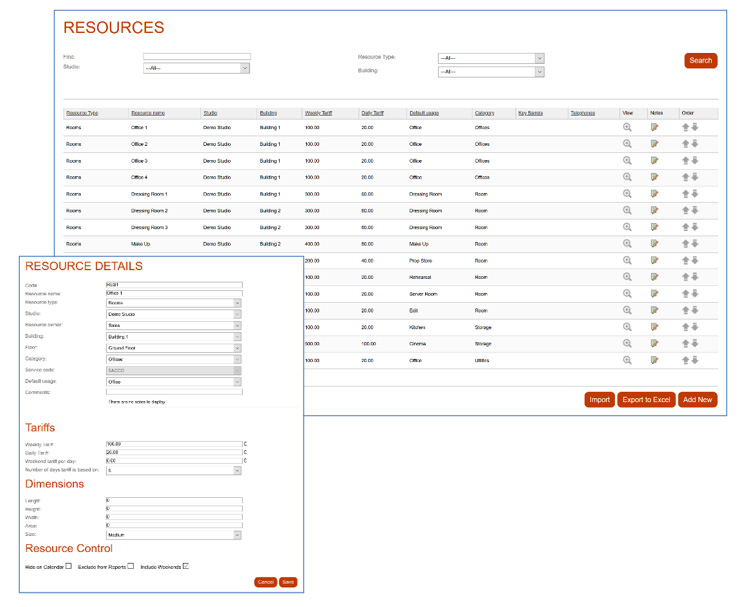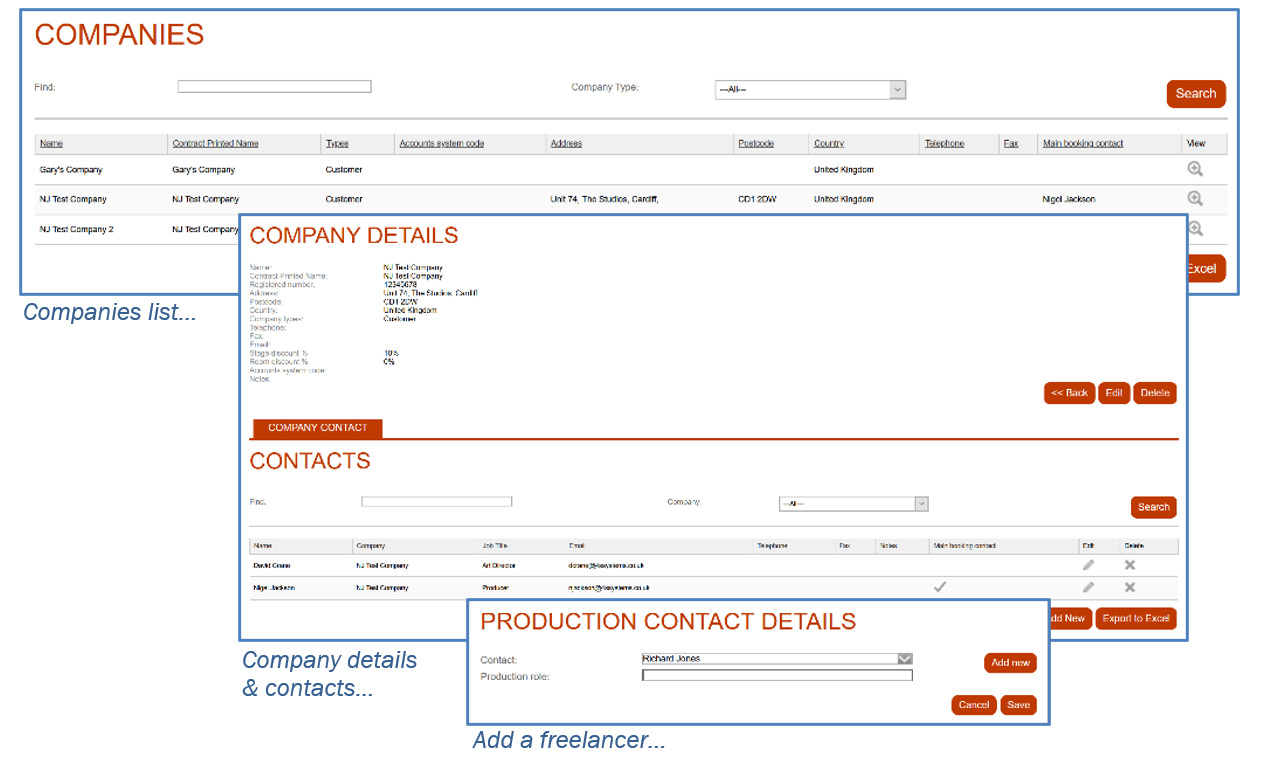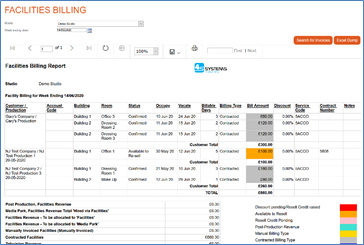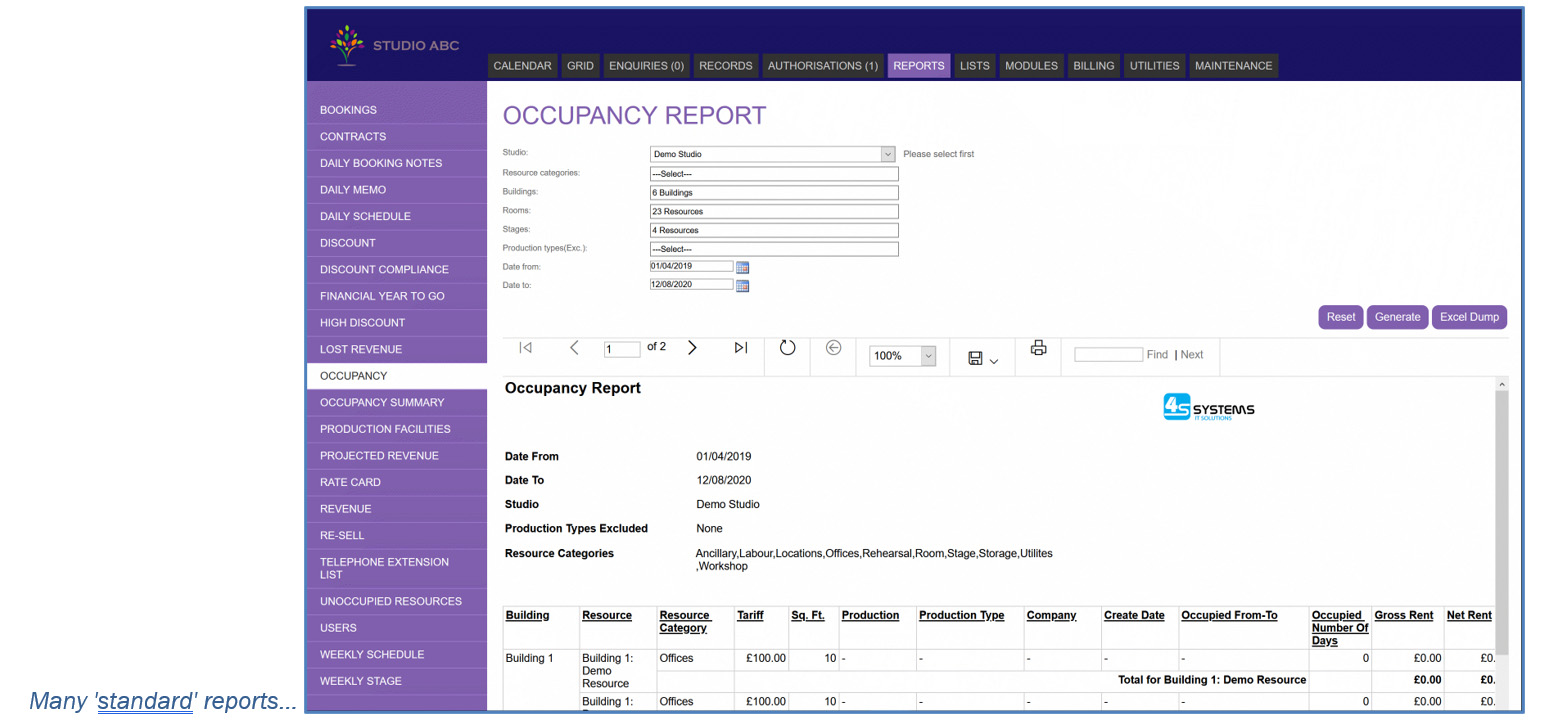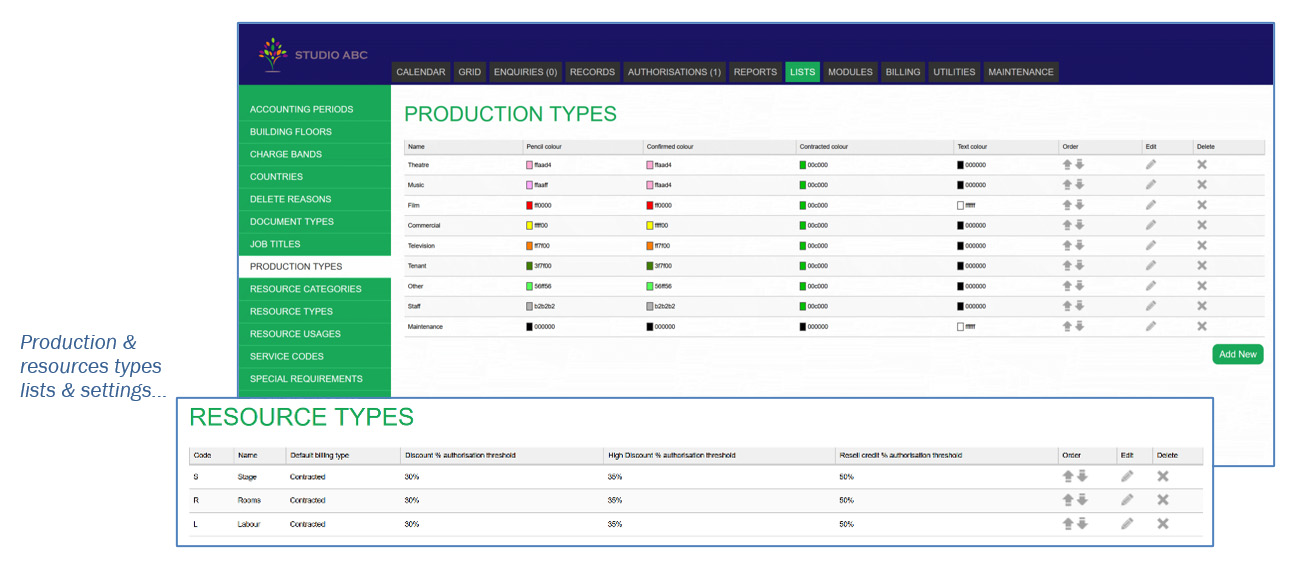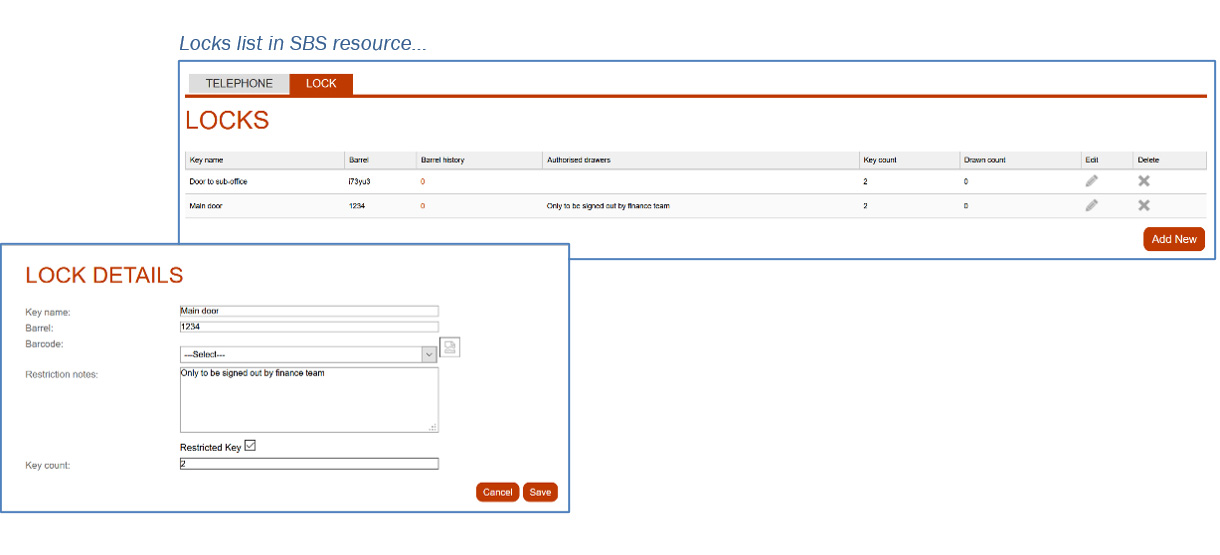Studio Booking
Studio Booking Services London, Surrey and the South East
4s Systems have many years of experience developing, implementing, and supporting software solutions for major film and TV studios. The key application, used in some of the largest studios in the UK, is the Studio Booking System (SBS).
SBS has been designed to cover all aspects of the resource management and booking process, from control of resources (for example stages, rooms, locations, labour and equipment), categorisation and rates, through pencilling and confirming bookings and management of booking changes, to reporting and data transfer to accounting systems.
SBS includes features and functionality that are specific to the film and TV industry. However, 4s recognises that as no two studios are alike, we work closely with customers to customise certain areas of the system to suit their needs.
Making IT easy with innovative solutions
Calendar
At the core of SBS is the calendar. It’s the first view users see when they log in, and it’s where all functions for creating and editing bookings start and where associated booking-related functions are accessed from.
Key features of the calendar are…
- Extensive filters enable you to see the information you need.
- Customisable date range gives you a detailed view of bookings, or a wide-range overview.
- Options available for users to customise the information they see.
- Colours and ‘thickness’ tell the user the status and other information about allocations, for example whether pencil or confirmed and the type of production.
- Access to functionality for creating and managing your bookings, jump to any specific allocation in any booking or resource, adding allocations to existing bookings, moving or deleting bookings or allocations, reselling space, adding production phase information, changing the usage or billing status of specific days.
Booking control
To manage your resources effectively and give you the information and control you need about current, future and past bookings, you need a comprehensive set of tools.
These features include…
- Adding new bookings, or adding new allocations to existing bookings from the calendar, CLICK+DRAG and SHIFT+DRAG+CLICK functionality to make it easy to set allocation duration and add multiple allocations using your mouse.
- Moving allocations from resource to resource, and extending or shortening the duration of allocations – by clicking & dragging or using menus.
- Reselling space if a booking changes – SBS tracks resell credit values.
- Deleting allocations or entire bookings – leads to the authorisation process.
- Managing key data about each allocation – agreed pricing or discount, usage, billing method.
- Generating quotations from booking data and allocations – templates can be built to match the look and feel of your corporate documentation.
- Generating contracts and associated documents from quotations
- Upload booking-related documents into the SBS, for example risk assessments and other H&S documents that productions need to provide.
Certain operations – discounts over a threshold set by your organisation, changing, moving or deleting allocations without resell – have to be authorised through the built-in authorisation system
Resource management
The resources that you hire are the heart of your operation and the functioning of the SBS.
Resource records contain all the data necessary for the booking process and related reporting, and SBS gives you the tools you need to create, modify, and manage your resources…
- Resource creation, editing and ordering.
- Visibility of the resource on the calendar and booking of the space.
- Calculation of cost for each allocation from the rate card in the resource record and duration.
- Grouping/categorisation of resources by building, location, default ‘usage’ (is a stage a stage or is it a live concert rehearsal space?), and other categories.
- Lock and key records. These can be used by KeyDraw for security operations – see below.
- Export resource data for use in spreadsheet applications.
Company and production management
Alongside the resource records, and just as important for SBS operation, are your customer and production records. These records store the vital information, and provide the data to the bookings, quotations, contracts and for billing…
- Basic company information – name, address, contact email.
- Contract related details – legal company and production name for the contract, registered number, notice address.
- Standard discounts for the ‘stages’ and ‘room’ top-level resource categorisation, to save entering these every time.
- Contacts – company and/or production contacts attached to those records, or freelancers who work on a production then move on to another.
Billing
- Integration – SBS can be fully integrated with your accounting system. We have experience of integrating with Microsoft Dynamics 365, Iris Exchequer and Sage, but because of the design of SBS and the import capabilities of most modern accounting systems, data transfer can be accomplished successfully, although note this may require some involvement from the providers of your accounting system.
- Data export – SBS can export billing data in spreadsheet format (csv, xlsx etc.) for manual import into your accounting system.
- Document generation – Pro-forma or tax invoices in your corporate design/template format can be output.
- Reporting – Reports can provide billing data for manual entry to an accounting system.
SBS allows you to specify whether your billing is based on, for example, a 5-day or 7-day week, and adjusts it’s internal rate calculation according to your setting. SBS has several regular billing routines built in, or billing can be run per-production or ad hoc…whatever you need.
Reporting
SBS gives you a suite of ‘standard’ reports giving information on a wide variety of data – production values, projected revenue, bookings, utilisation, unoccupied space, current rate card etc.
But 4s recognise that every organisation is unique, and your reporting requirements will be just as unique, so are ready to modify the standard reports, or build new reports to meet your requirements.
Static Data Management
for example…
- Production types and display colours.
- Resource types and authorisation thresholds.
- Resource categories and usages.
Data security
You will certainly have highly confidential data of your customers – their company details and that of their productions. You may have personal data in the system relating to contacts, for example mobile phone numbers and email addresses may be personal not corporate, therefore under the remit of the GDPR Regulations.
SBS gives you peace of mind with these high-level controls…
- Fields in the database that might potentially contain personal data are encrypted at rest.
- On a hosted server access to SBS is by the HTTPS protocol, meaning data is encrypted in transit between the database and user’s browser. This can be implemented in on-premise solutions but may not be considered necessary.
- Daily backups of data to a separate server.
- Option for users to implement 2FA, and admin setting to prevent users turning it off. We strongly recommend you develop a formal policy for this key aspect so everyone understands what is required and why.
In addition, SBS gives you extensive and flexible control over user activities through its role-based permissions system. You can create any number of roles and add your selection of permissions. There are permission options for calendar access and operations, access to records, authorisations, access to reports, static data management, notifications and billing etc. In each of these areas there are numerous options, enabling you to build an effective permissions system for your studio and staff.
Physical security
KeyDraw is designed to be installed locally on PCs in reception or security offices, and operated by the team who issues keys to productions and receives returned keys. KeyDraw only permits keys to be signed out for productions that are ‘live’ on that day, and integrates with SBS in real time to ensure it is always up-to-date – as bookings are added to SBS, keys can be signed out.
Some features of KeyDraw…
- KeyDraw reads the lock and key data from SBS resources, so ‘knows’ which keys belong to which resources, and how many keys are available.
- KeyDraw also reads certain booking data and will only permit keys to be withdrawn for resources that are booked on a particular day. No booking in SBS – no key issue!
- Keys can be signed out using an electronic signature pad or sign-out integrated with a fob system such as Net2 which speeds up the process. Either way the sign out is recorded in the KeyDraw database.
- Keys can be signed out individually, or a ‘key bag’ can be created and many keys added to the bag. A single signature signs out all keys, but they have to be signed back in individually so they can be checked and verified.
- Keys can be barcoded which makes signing out/in and creating key bags quick and easy
- KeyDraw tracks every sign out and return, and only permits the number of existing and available keys to be signed out.
- If a production wishes to restrict access to certain keys, for example a runner cannot sign out keys for the director’s or finance office, details of the restriction can be entered into the booking in SBS, and this flags a red warning in KeyDraw. As SBS is not integrated with the security system the details of the restriction are emailed to security – the red warning tells them to check the email for details and check the ID of the person collecting keys.
- Various reports are available for inventory and checking.
